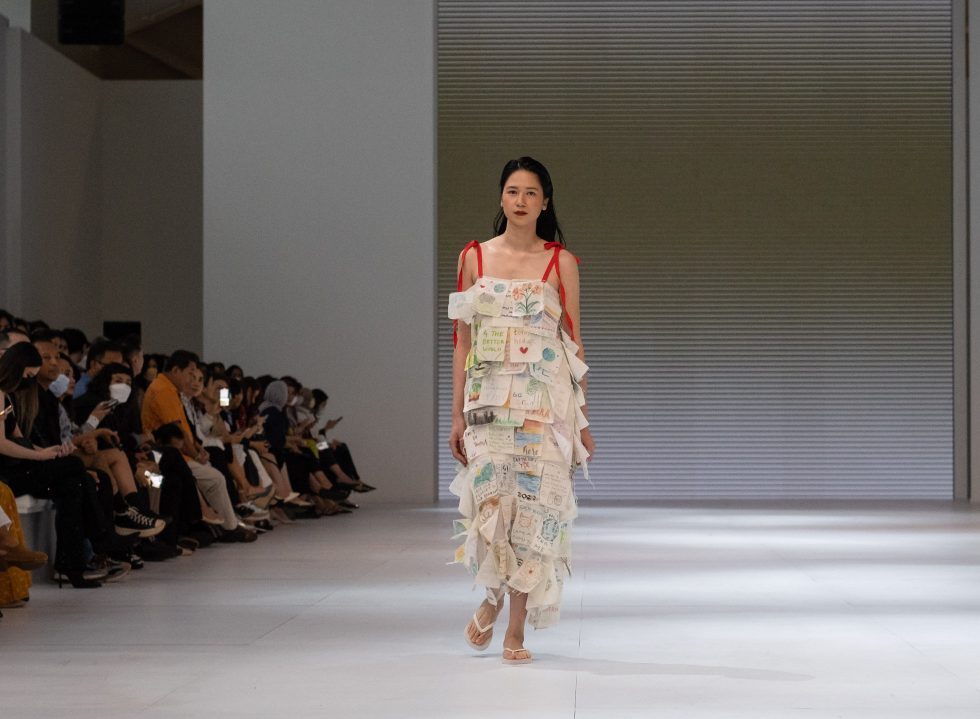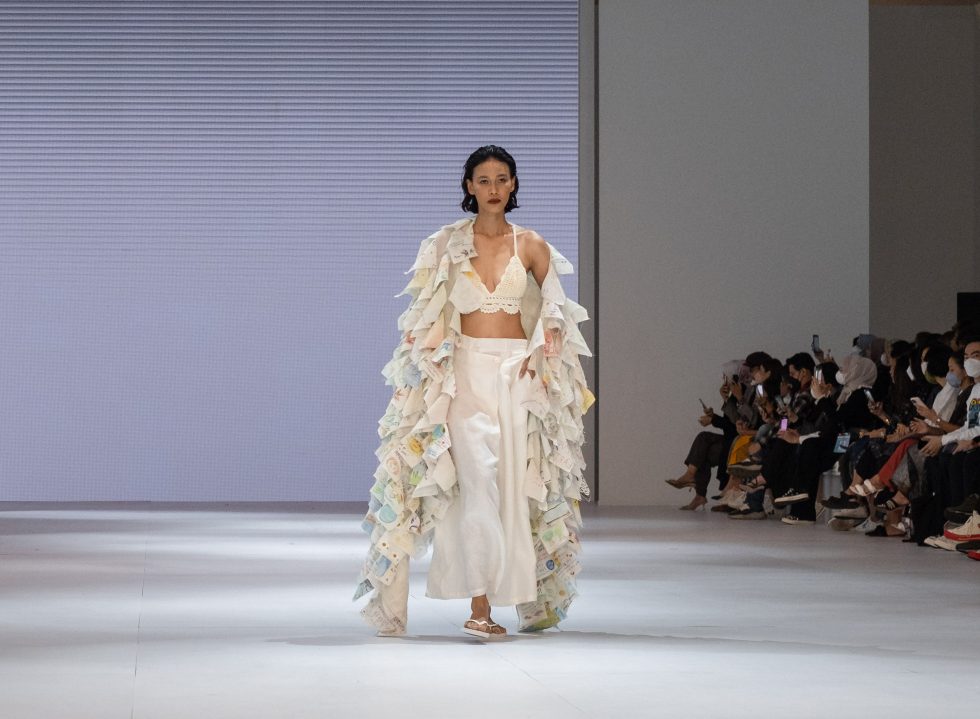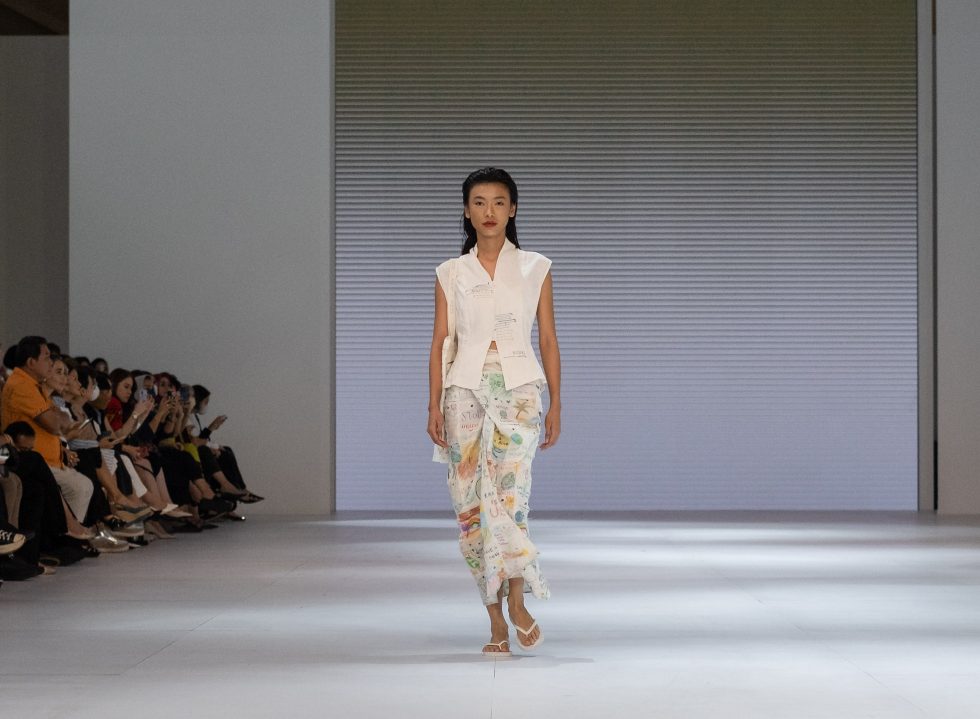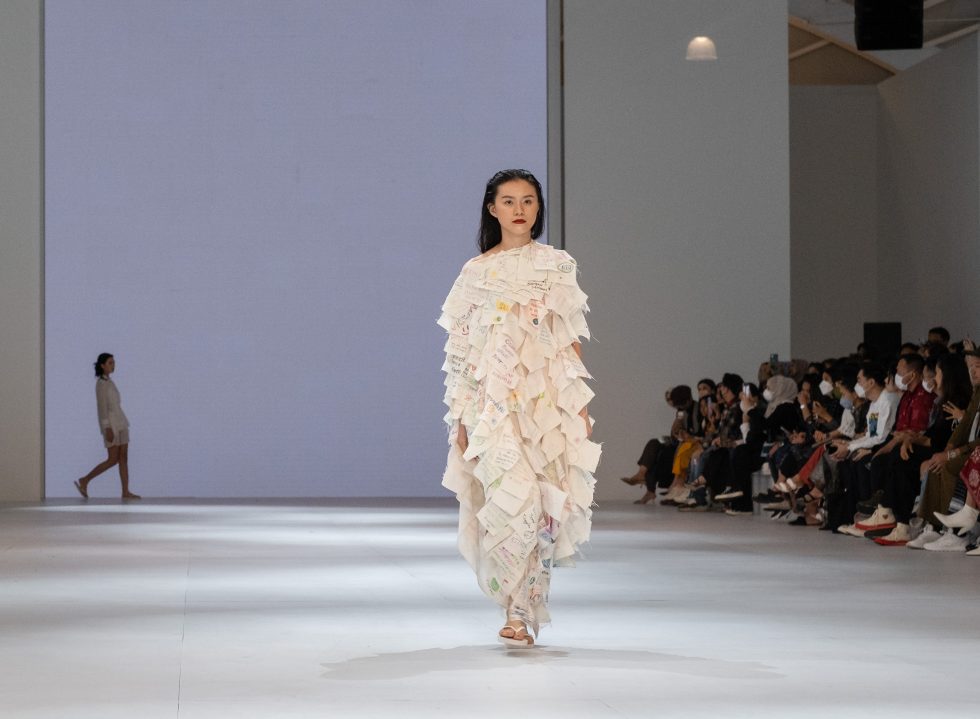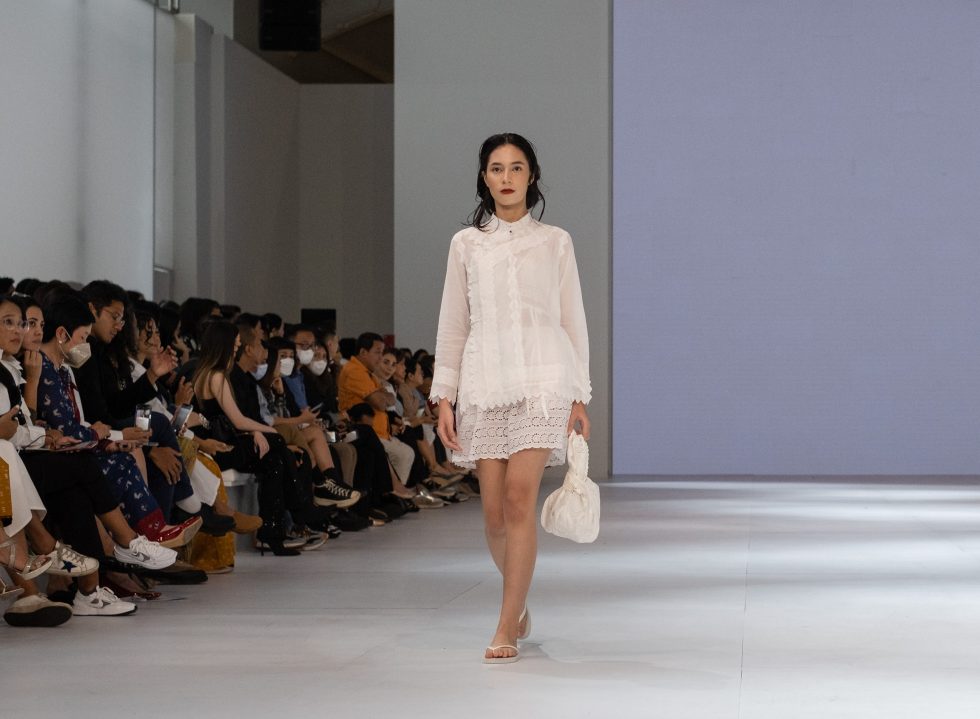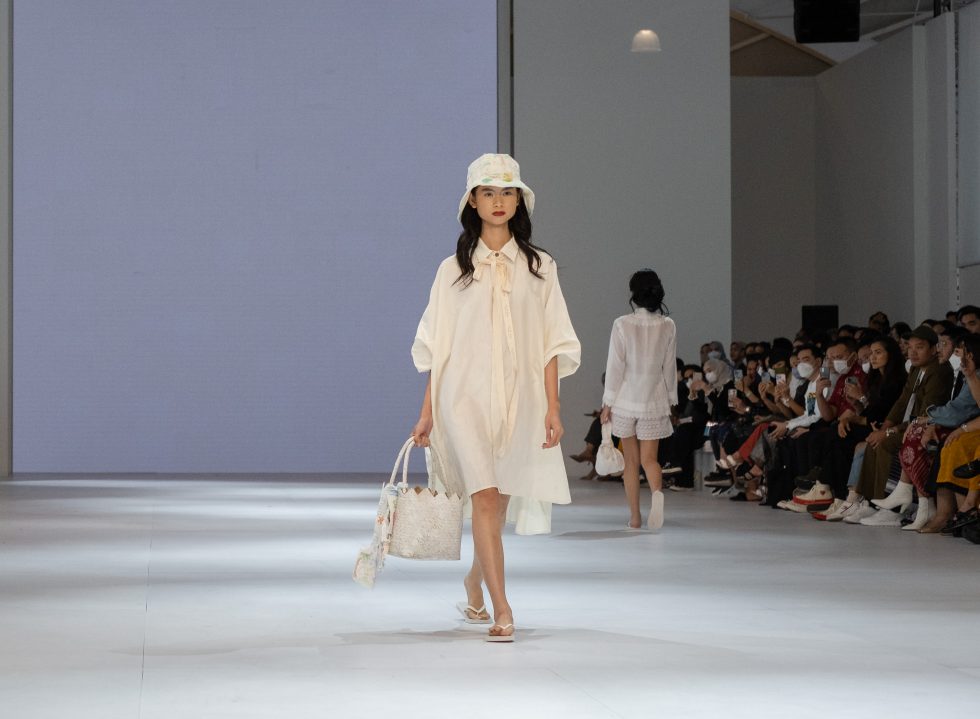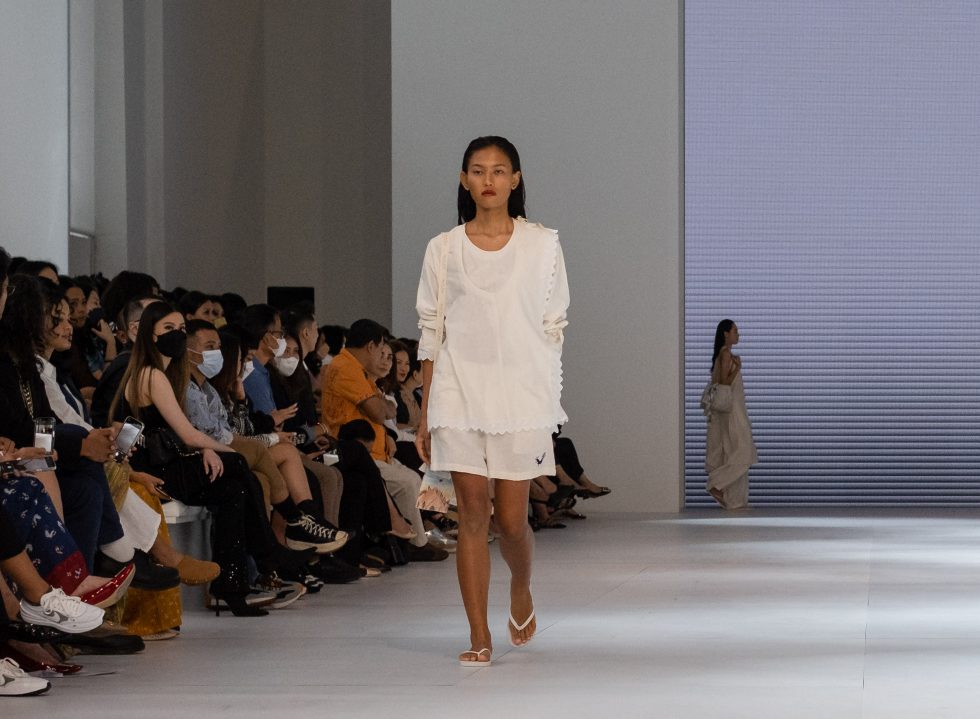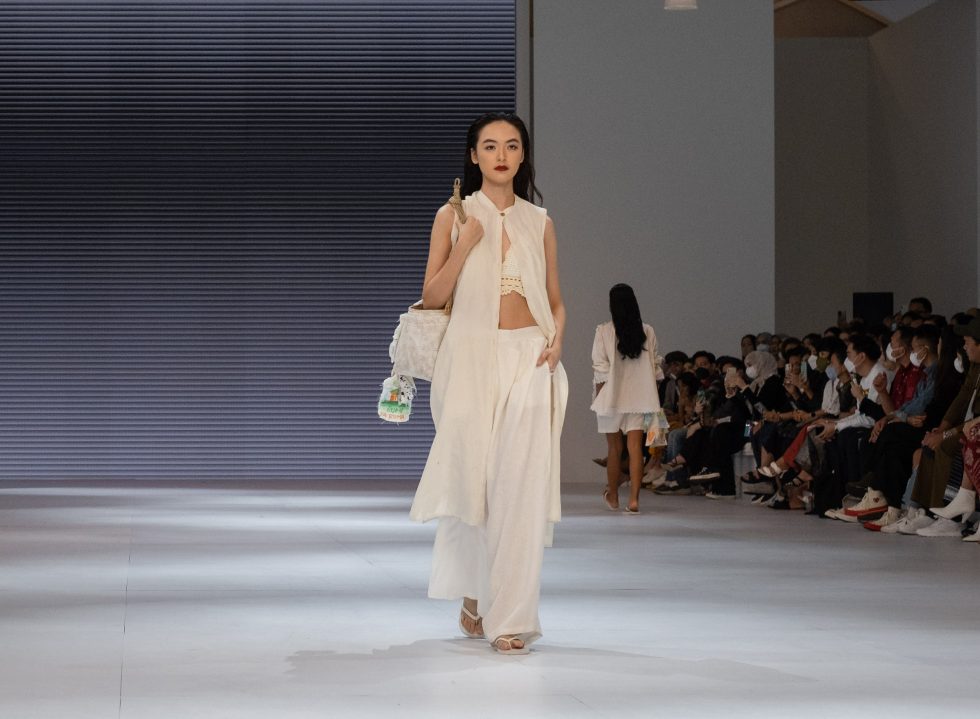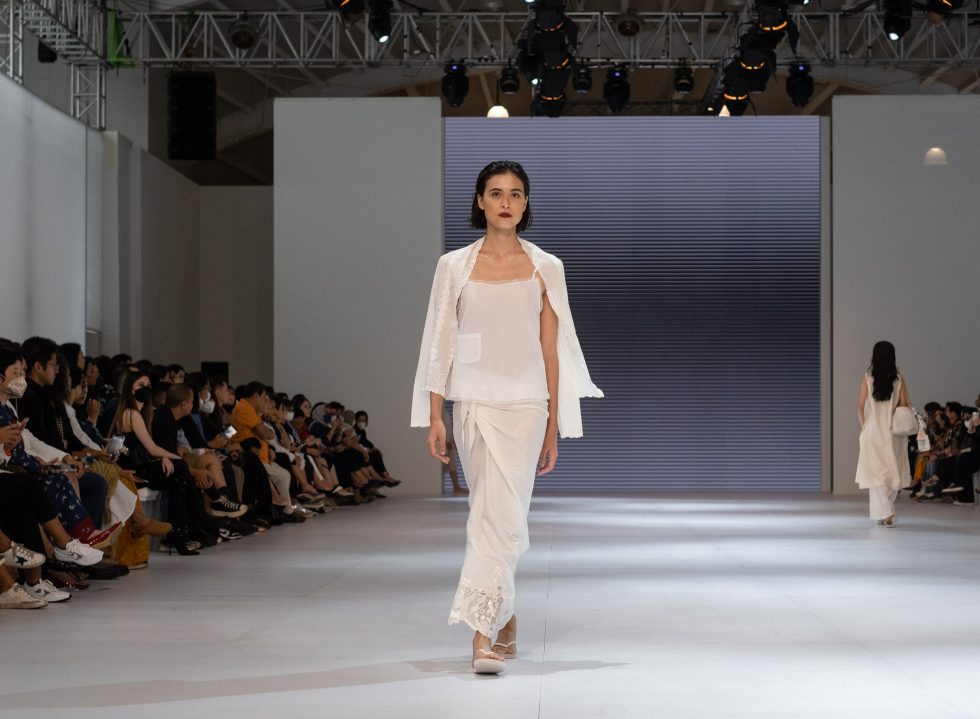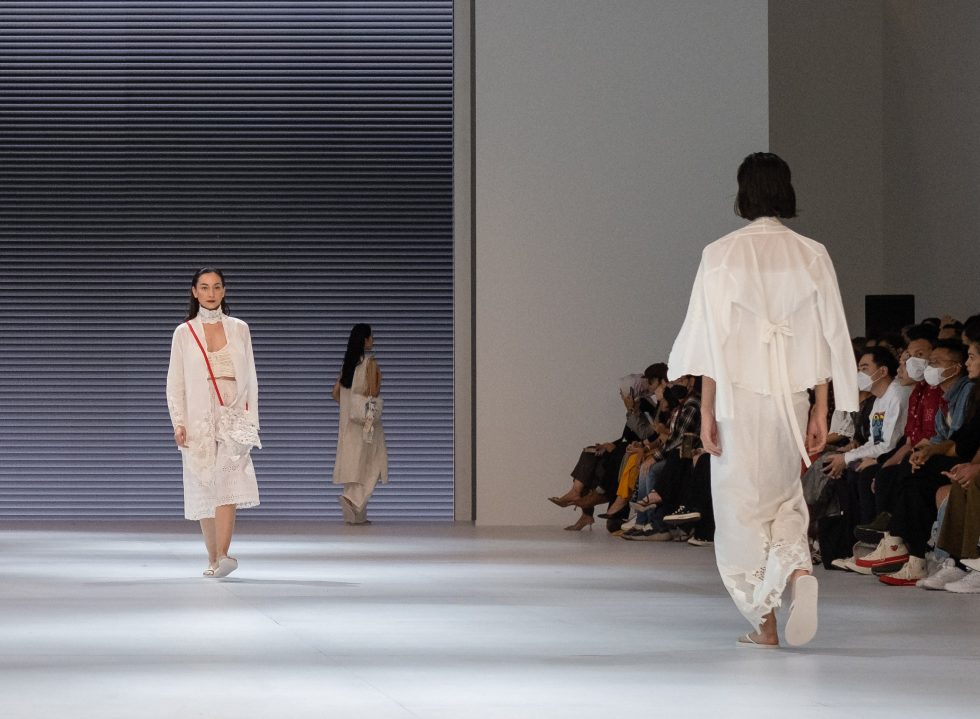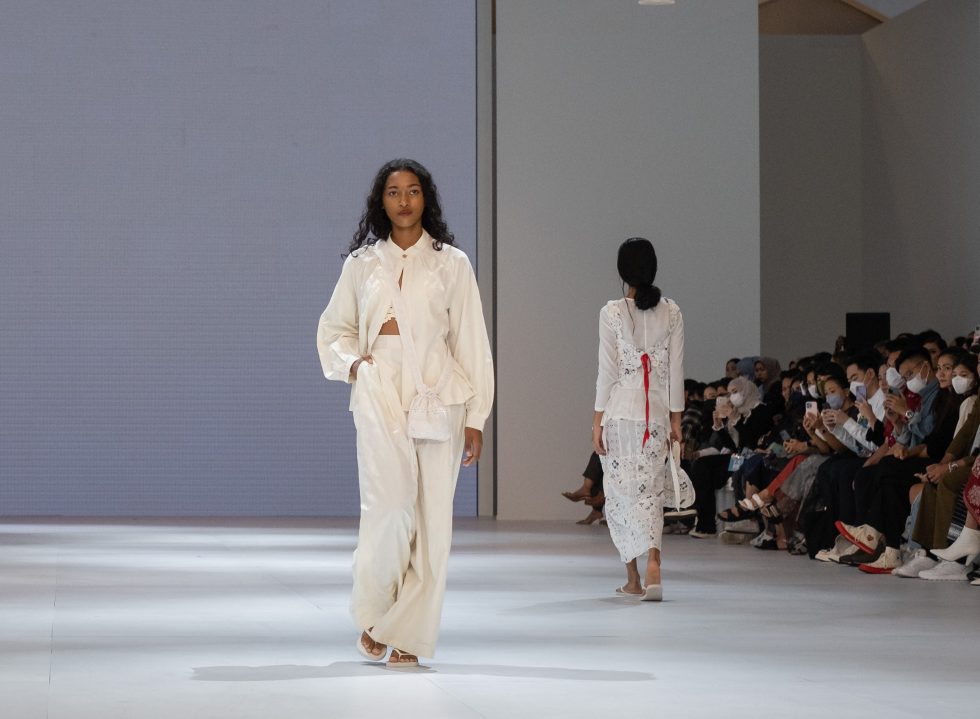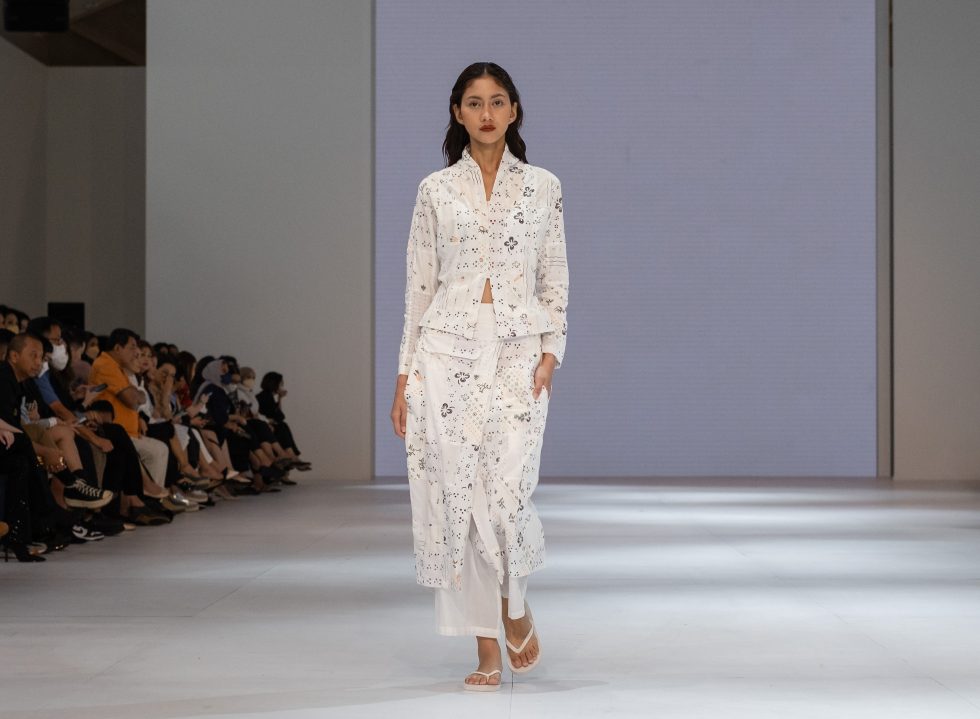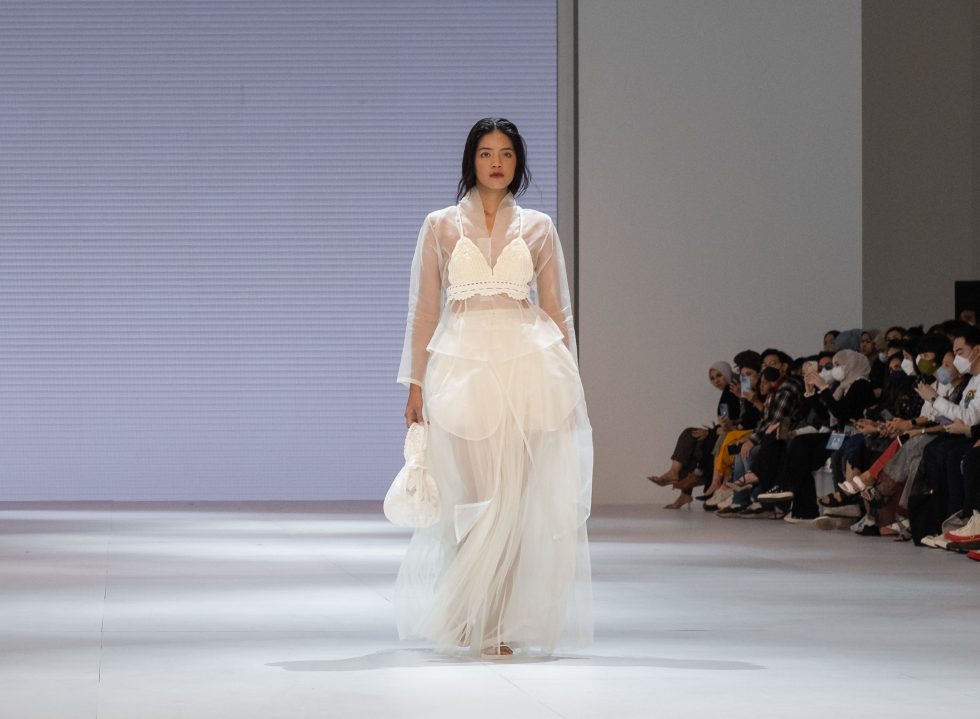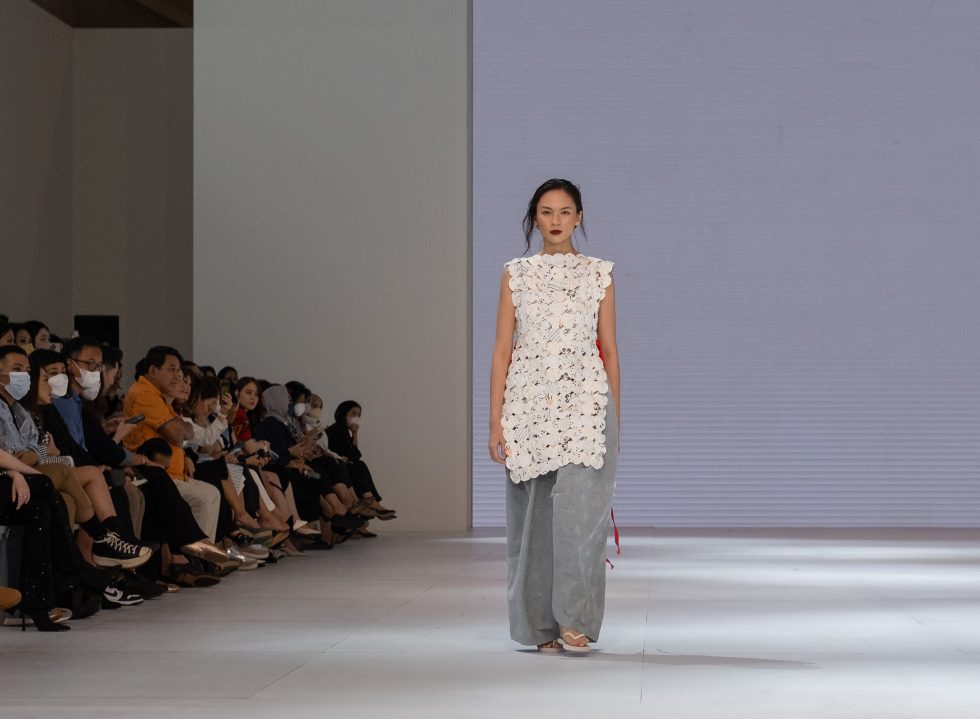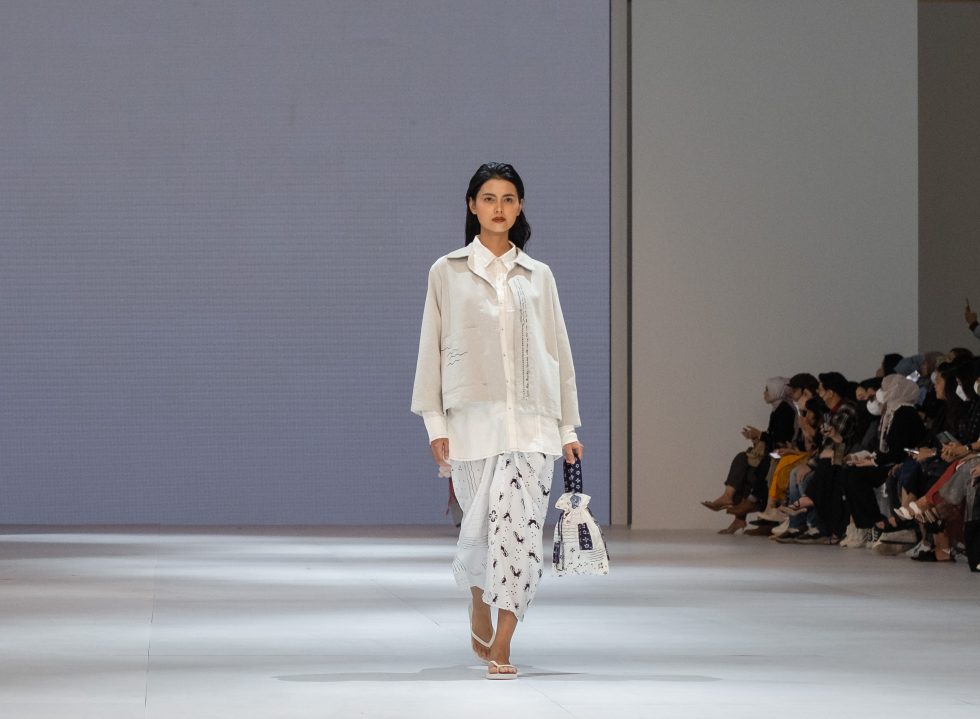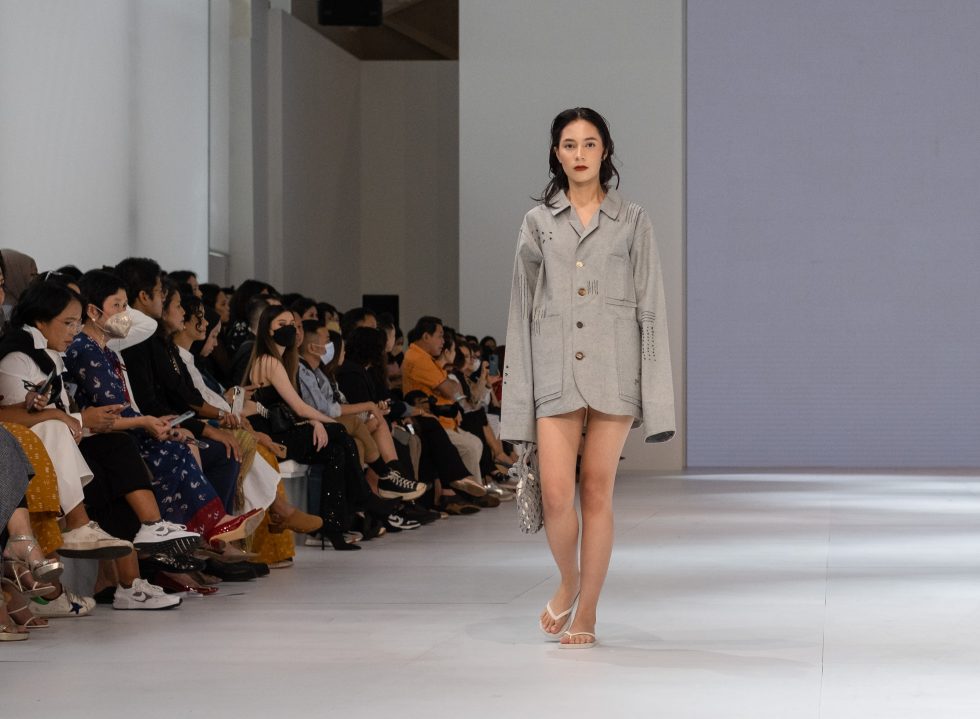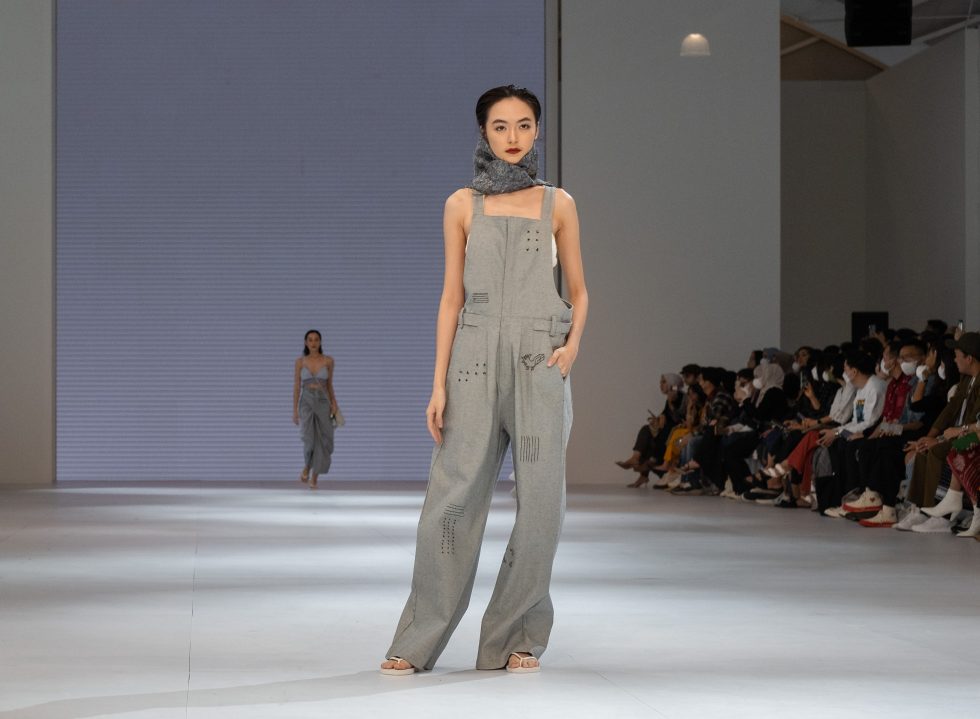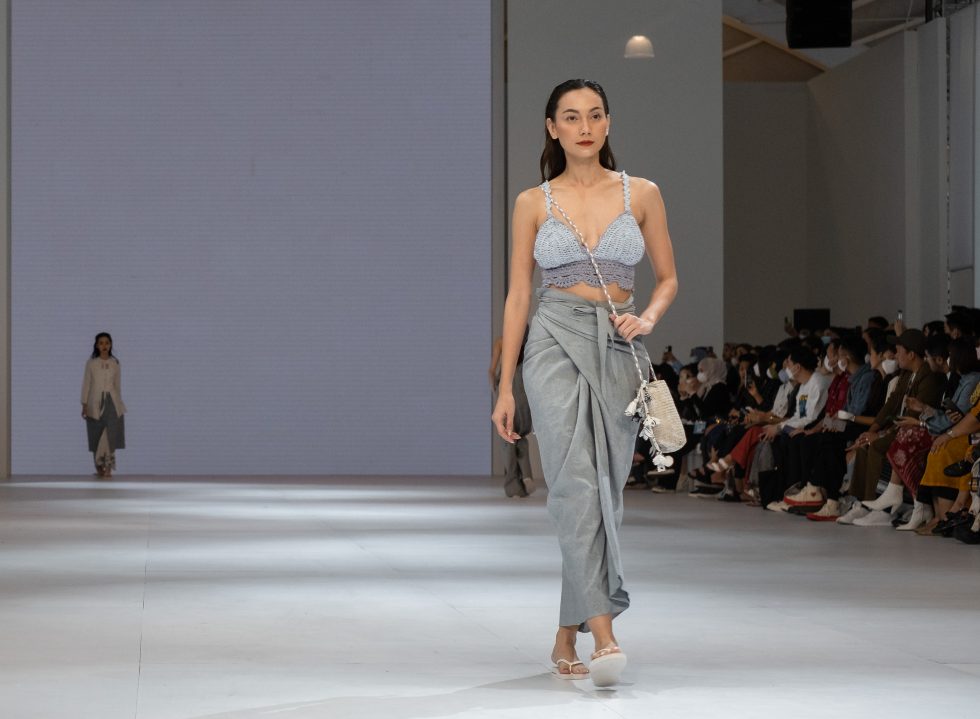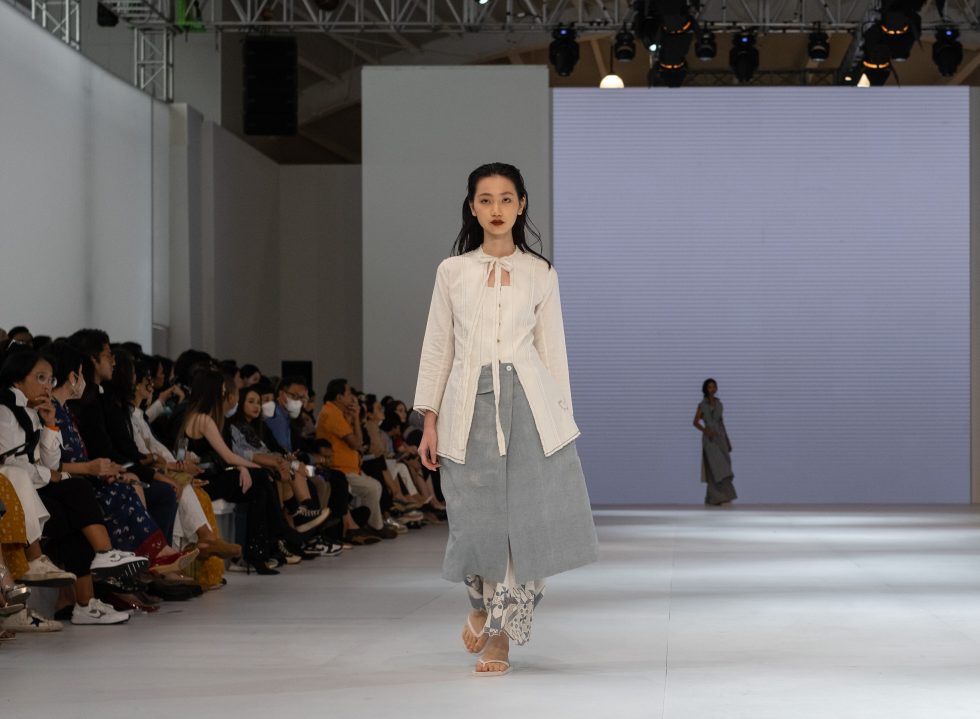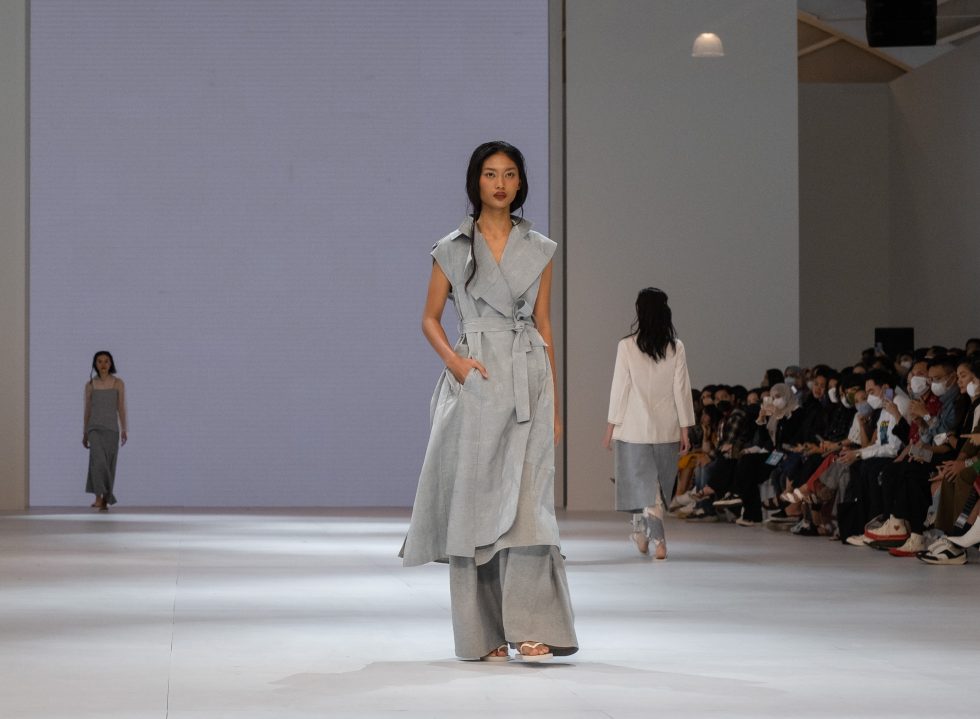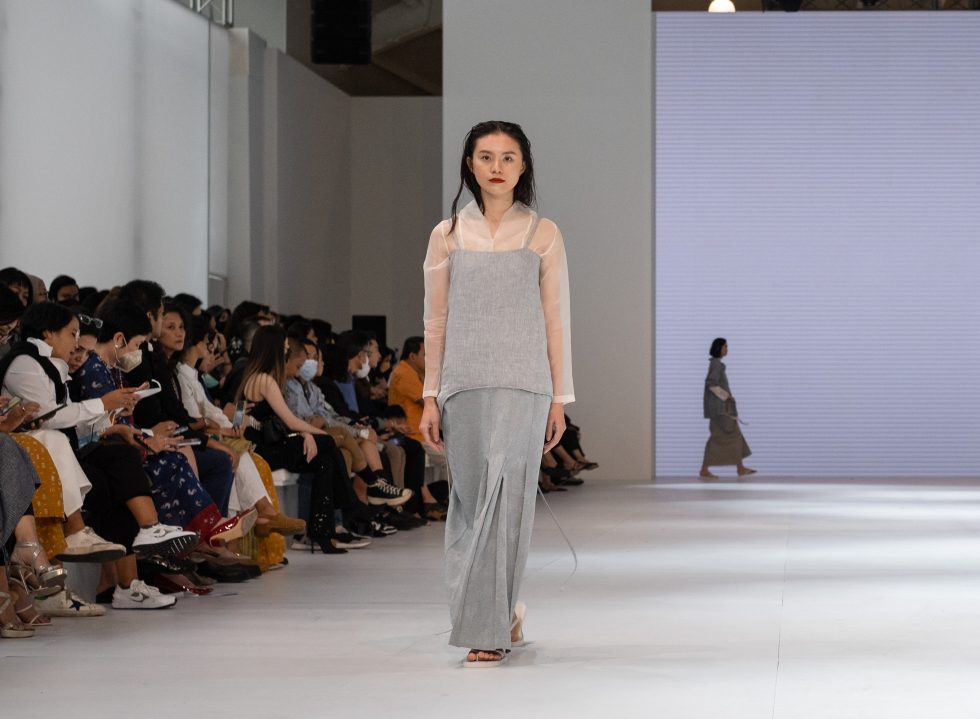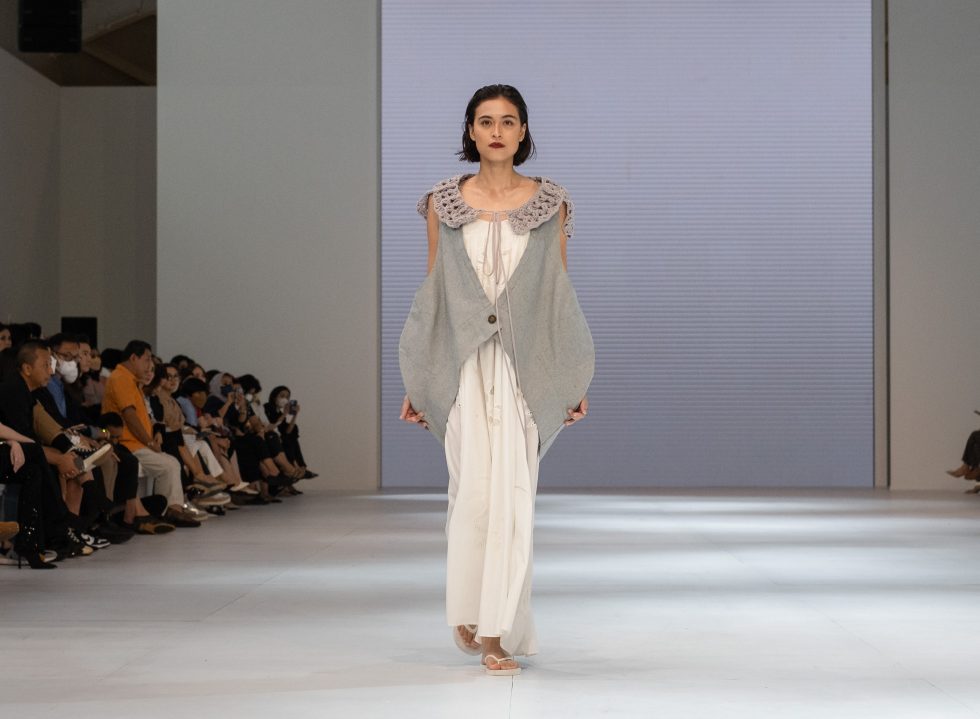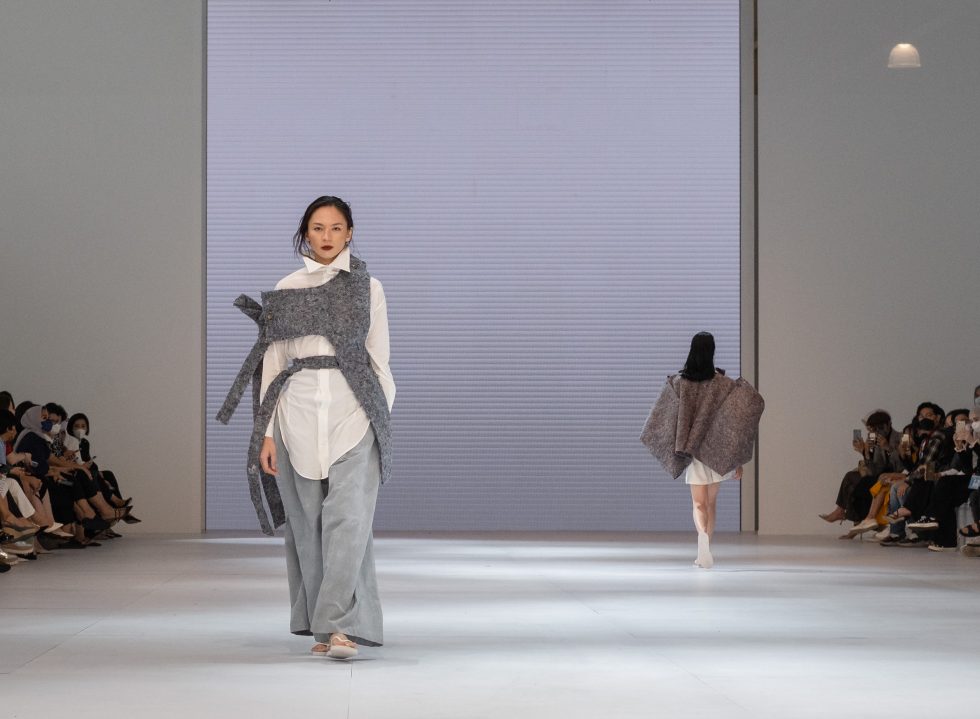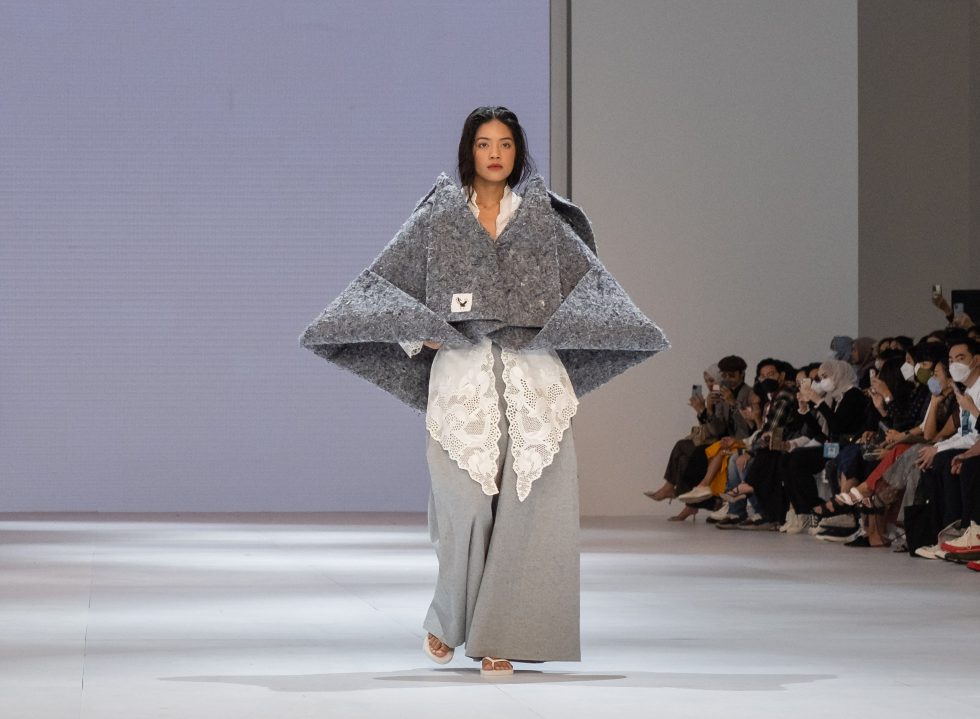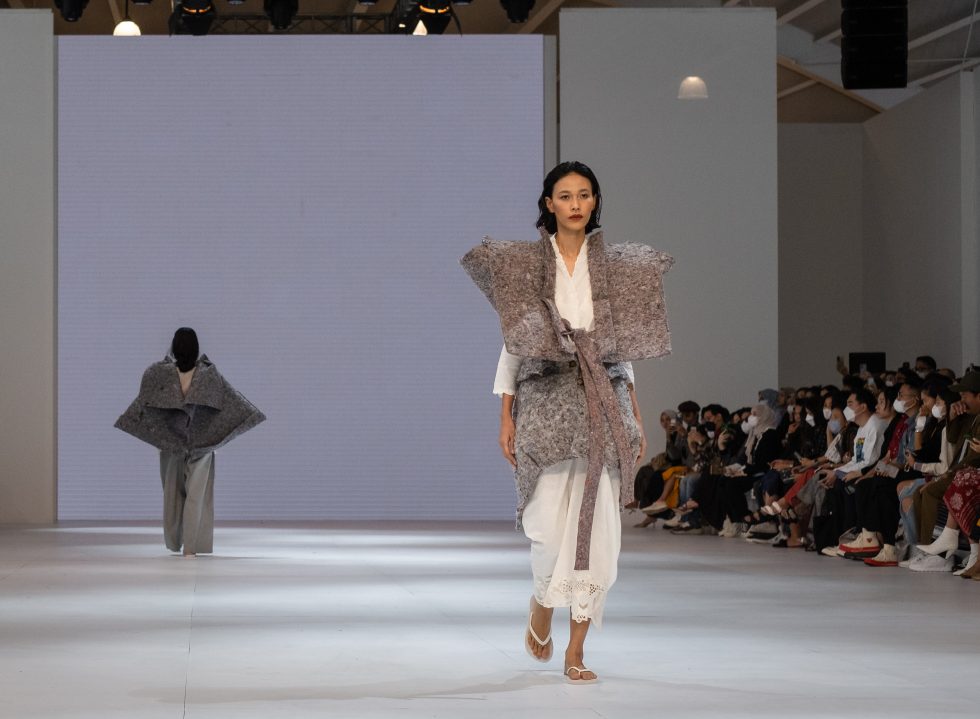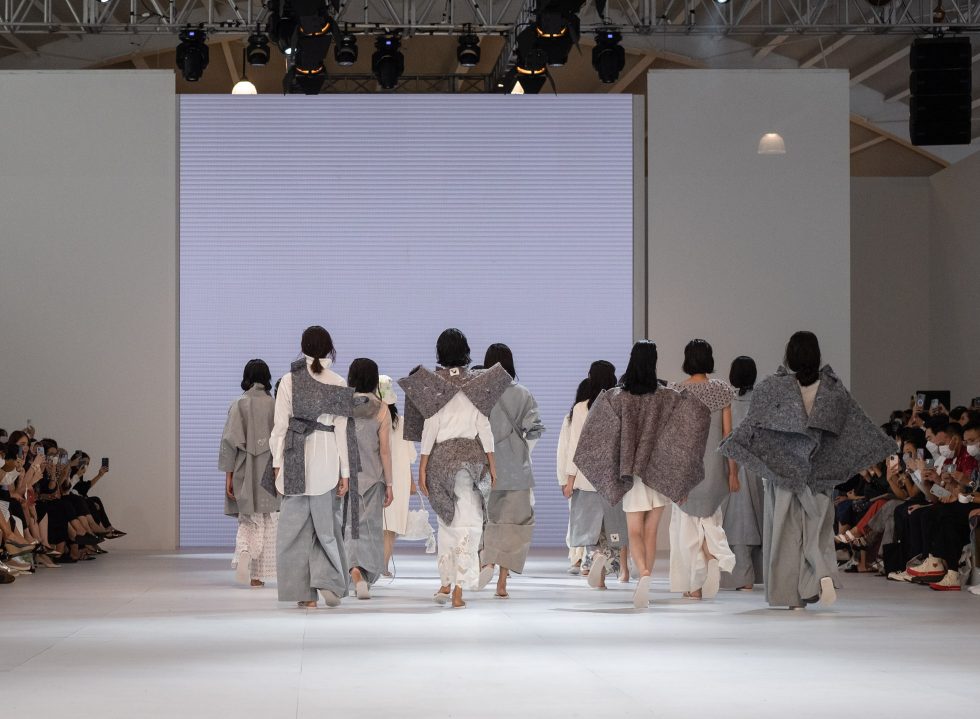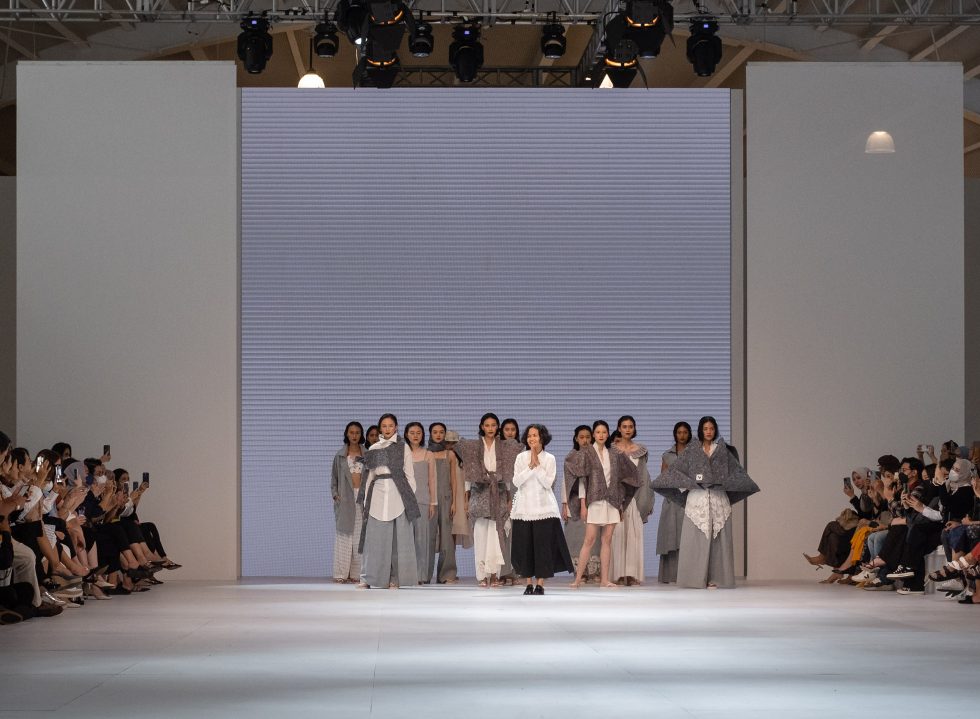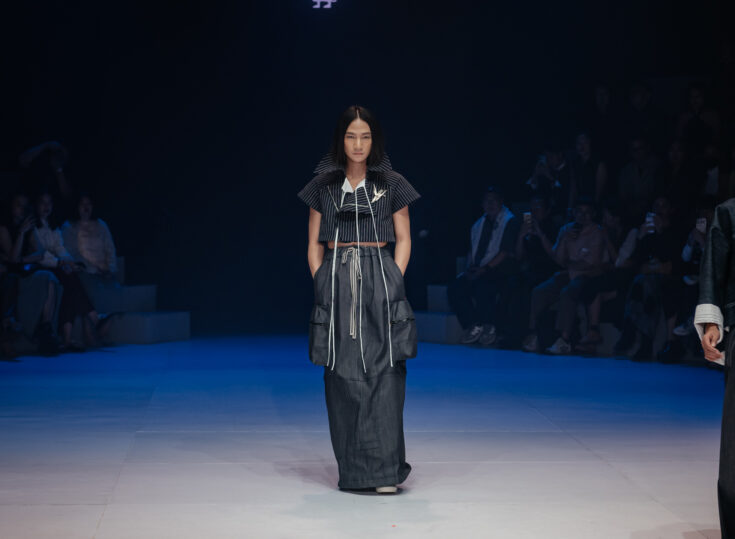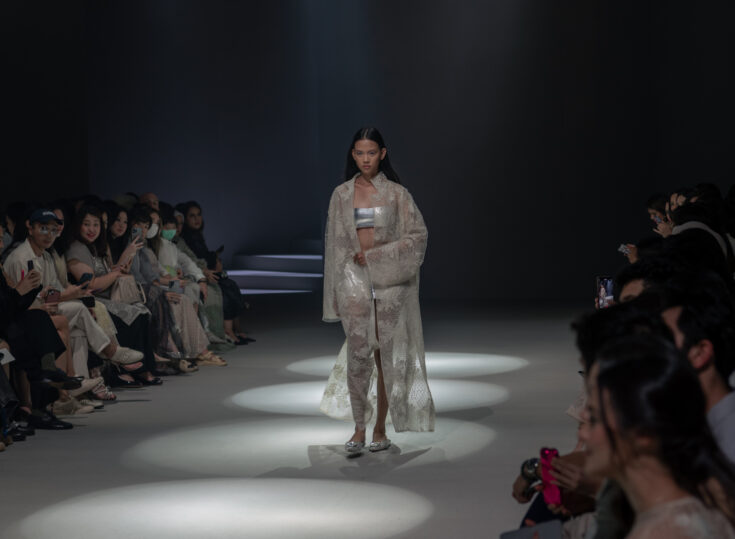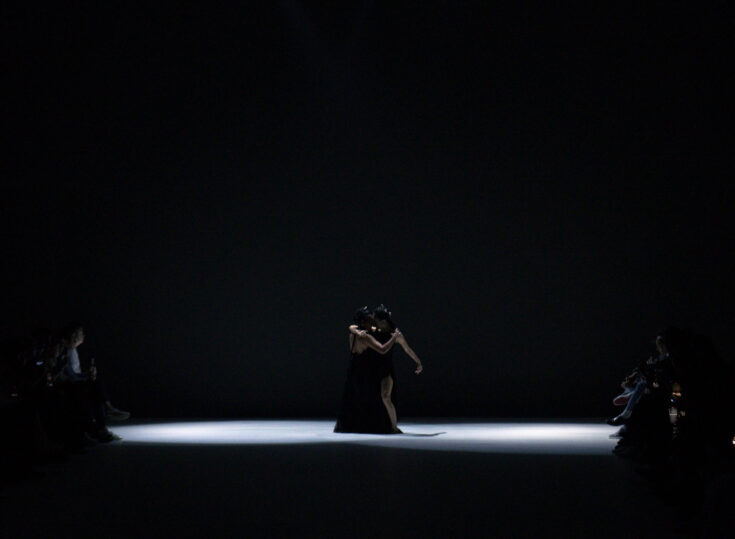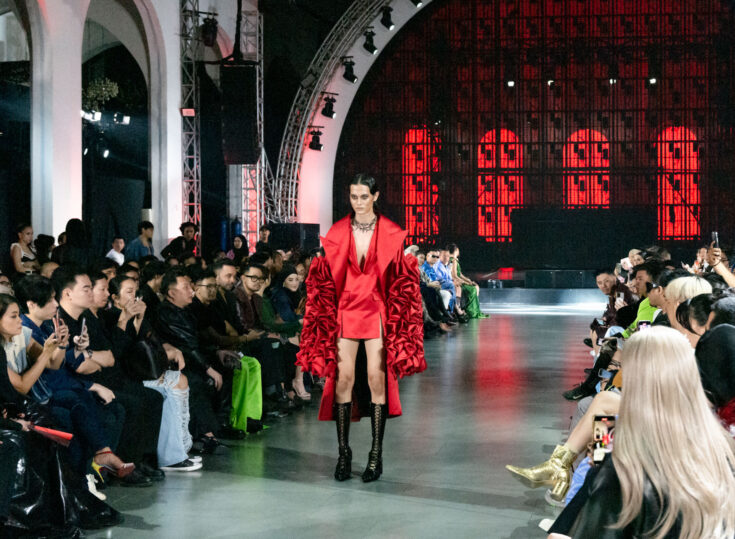It has been more than two years, due to the pandemic, since designers held an actual offline runway show at Jakarta Fashion Week. No doubt, the local fashion industry has taken a big hit during those times of uncertainty. This is why the return to the runway presents a crucial opportunity for brands not just to reintroduce, but also display a concrete direction of what they stand for and where they are heading next. Sejauh Mata Memandang is not one to squander that chance.
Instead of opening the show by jumping straight into establishing a sensible wardrobe aimed at their customers, designer Chitra Subyakto opted to make a statement through her collection, ‘Baur’. In particular, a shin-grazing dress with scarlet straps, as worn by actress Laura Basuki, was created using square patches of white fabric that contain colourful drawings and handwritten messages. Those patches were collected from Sejauh Mata Memandang’s art installation in ARTJOG 2022 back in September this year, in which visitors were encouraged to write and draw their hopes for the Earth.
Before the show, Chitra mentioned the pandemic had given her time to reconsider her approach to the production of clothes. “We have never claimed to be a sustainable brand. But we want to be more responsible.” The opening effectively provided a compelling narrative and set the tone for the rest of the collection.
Since the start, Sejauh Mata Memandang has been one of the top-of-mind brands for customers looking for pieces that marry Indonesian traditions with a globalised point of view. Chitra is aware of what her customers have come to expect from the brand. The collection carries the same consistent DNA that is translated through pieces that one can mix and match to fit various occasions. To wit, a light kebaya outer is worn over an almost translucent camisole top with a wrap skirt that evokes a holiday in Bali. Similarly, the same kebaya outer and skirt can also be incorporated for a formal wedding event.
Chitra also took the opportunity to expand the brand’s demographic. An oversized blazer jacket worn as a dress and a knitted bralette paired with a wrap skirt reflected the tendency of the current younger generation who have no qualms in baring their skin as a form of expression. Although the use of slippers is nothing new for the brand, it provided a sense of ease and an irresistible standpoint during the rainy season. Getting your feet wet? So be it. Most importantly, they established how the collection as a whole is created with the female gaze in mind.
But what about the aforementioned statement of being a responsible brand showcased through the opening looks? Chitra is not one to be preachy about it. Interspersed throughout the collection are looks that are made with both new and upcycled fabrics and materials using post-consumer textile waste from their collaboration with EcoTouch, a Bandung-based company specialising in making insulators out of textile waste.
A case in point is the deceptively simple oversized light blue jacket, which upon closer look, features the signature rooster motif of the brand. The jacket is casually worn over the kebaya top, while the gender-neutral quality also means it will work on their male customers too.
Chitra also brings drama in the closing looks. Models came out wearing a variety of outerwear made using thick felt fabric that is originally used as insulators for rooms and cars, also crafted in collaboration with EcoTouch. Made using recycled fabric, these one-off looks are also a form of material exploration that Chitra sought to experiment with.
For some, it may just be an opportunity for Instagram-worthy shots while the conversation of being mindful in fashion consumption may have reached a point of fatigue. But given the current climate that is marked by intense flooding, drought and hurricanes as the world slowly returns to the pre-pandemic routine of travelling and going to concerts, being “responsible” is a point worth repeating.
